Exam 2 - Psy 331
1/100
There's no tags or description
Looks like no tags are added yet.
Name | Mastery | Learn | Test | Matching | Spaced |
|---|
No study sessions yet.
101 Terms
Divided Attention
paying attention to more than one thing at one time
Sustained Attention
ability to focus on a specific task for a continual amount of time
Selective Attention
focusing on specific objects and filtering out others
What are two ways attention is selected?
Endogenous (you choose) and exogenous (environment chooses)
What are two ways eye movements is measured?
Saccades and fixations
Saccades
small, rapid eye movements
Fixations
pauses in eye movements that indicate where a person is attending (three fixations per second)
Stimulus Salience
areas of stimuli that exogenously capture attention due to their properties (i.e. color, contrast and orientation)
Scene Schema
prior knowledge about what is found in typical scenes (fixations are influenced by this knowledge)
Inattentional blindness
a stimulus is not perceived even when a person is looking directly at it
Change blindness
a change from one image to another is not noticed
Binding
process by which features are combined to create perception of coherent objects
Binding problem
features of object are processed separately in different areas of the brain
Treisman and Gelade - Feature Detection Theory

Preattentive stage
features of objects are separated
Focused attention stage
features are bound into a coherent perception (attention is solution to binding problem)
Conjunction Search
finding target with 2 or more features (Where’s Waldo)
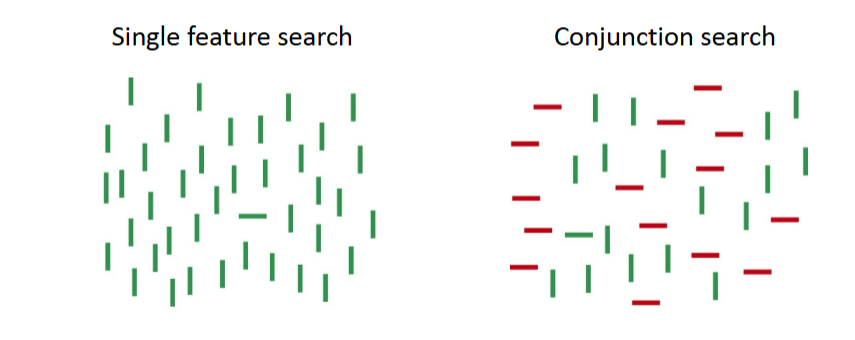
Illusory Conjunctions
features that should be associated with an object become incorrectly associated with another
Balient’s Syndrome: patients with parietal lobe damage show lack of focused attention results in incorrect combinations of features
Akinenotopsia
both sides of brain damaged (medial temporal area)
Attention capture
motion attracts attention to the moving object
movement of objects or the observer’s movement through object assists in organization of stimuli
Real motion
an object is physically moving
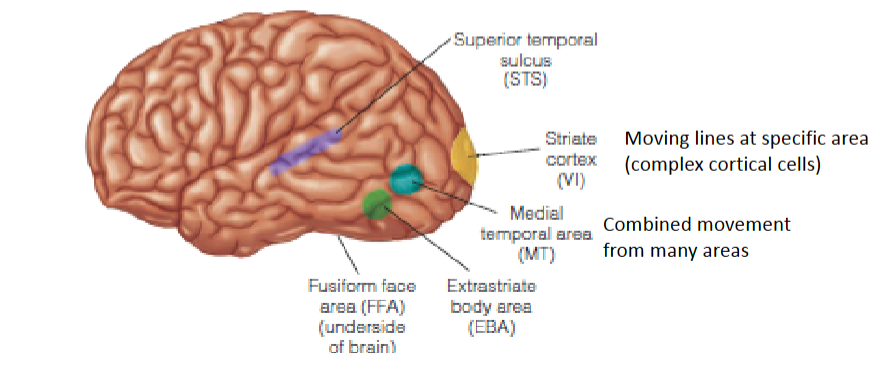
Monkey and Dots Experiment
As coherence of dot increased:
middle temporal (MT)neuron activity for that direction increased
Judgement of movement accuracy by monkeys increased
MT context activated by specific direction
Monkey more likely to select artificially stimulated directions
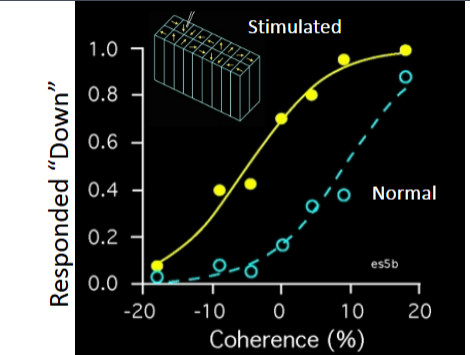
1st Situation of Movement
An object moves, and the observer is stationary. Movement creates an image that moves on the observer’s retina
2nd Situation of Movement
An object moves and the observer follows the object with their eyes. The image is stationary on retina
3rd situation of movement
An observer moves their eye. Image of environment moves across retina but environment is perceived as stationary
Corollary Discharge Theory
Movement perception depends on three signals: motor, corollary discharge signal and image displacement signal
*Motion perceived if CDS or IDS occurs, but not both at the same time
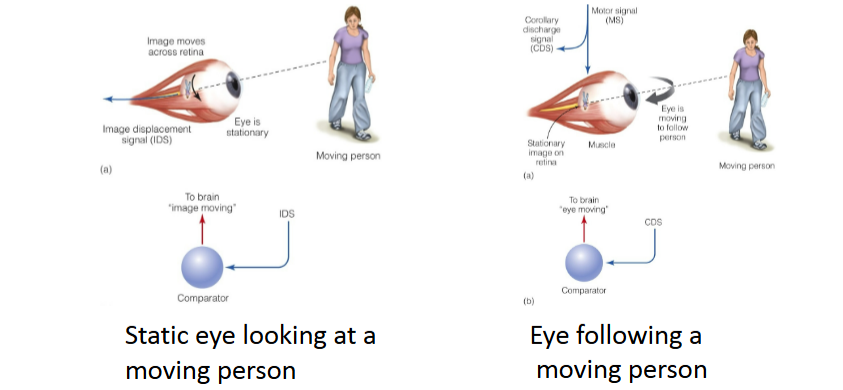
Motor
signal sent to eyes to move eye muscles
Corollary Discharge signal
split from motor signal (secondary signal)
Ex. Look at Dr. Miles. follow him as he moves
Image Displacement Signal
movement of image stimulating receptors across the retina
Ex. Stare at box, Dr. Miles move across from it (something move across eye)
An example of motion not perceived
Look at circle, move eyes to another area: IDS and CDS occurs
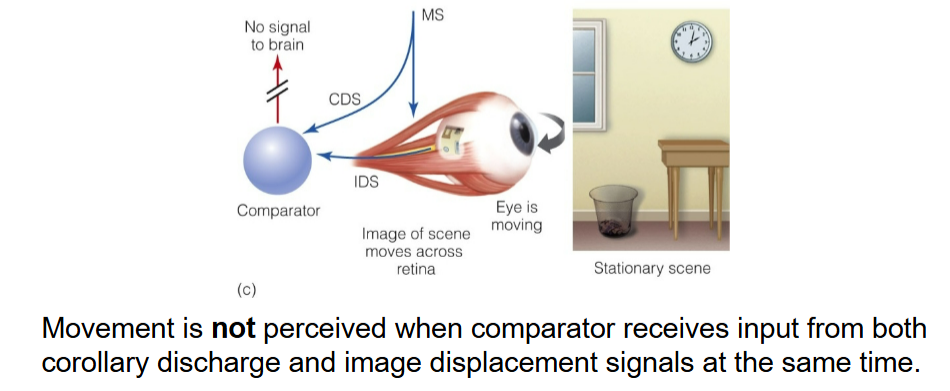
What do neurons in Extrastriate cortex in monkeys respond to?
Responds when a stimulus moves and do not respond when eye moves
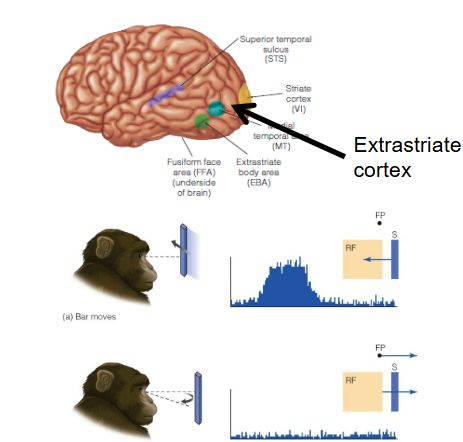
Optic Array
structure created by surfaces, textures, and contours, which change as the observer moves through environment
Ex. Navigation
Global Optic Flow
overall movement of optic array and indicates observer is moving not environment
Ex. standing still while boat is moving or virtual reality
Moving forward
vision expands
Moving backward
vision implodes
Local disturbance in optic array
actual moving objects will cause a small area to “flow” differently than rest
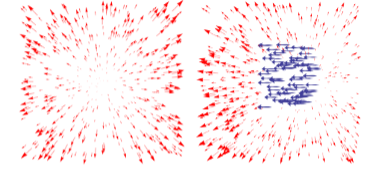
Aperture (hole) problem
Direction of a part of a moving object does not always provide enough information about how whole object is moving
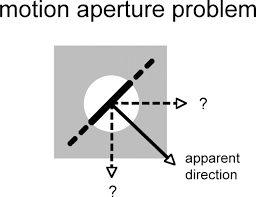
Solution to aperture problem
how ends of object move determines how you see parts moving (end-stopped cortical cells)
Biological motion
movement of person or other living organism
Ex. how a person is walking determines their emotions; walking fast = nervous
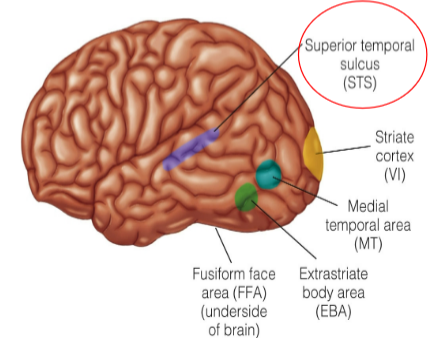
Point-light walker stimulus
biological motion made by placing lights in specific places on a person
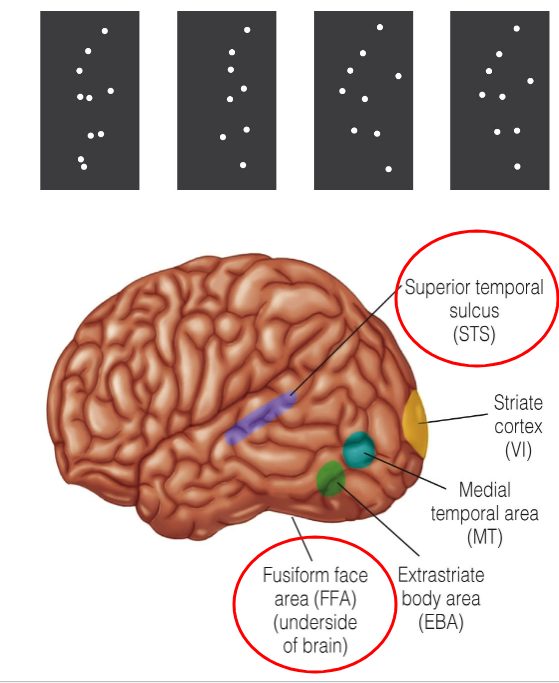
Motion aftereffect
movement appears to occur in opposite direction from the original (sometimes called the waterfall illusion)
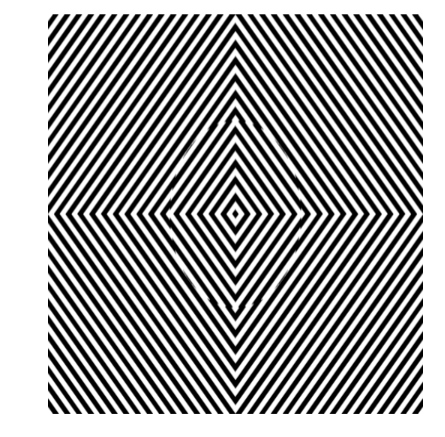
Illusory motion
apparent movement between objects where stationary stimuli are presented in slightly different locations (looks like its moving)
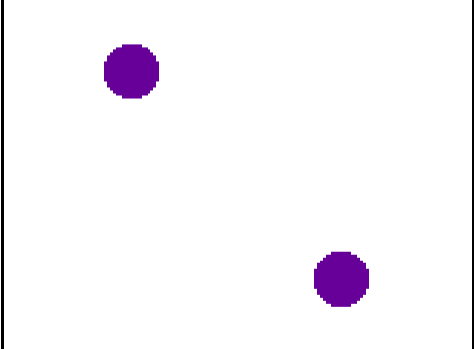
The Phi Phenomenon
Ex. movies where still pictures are combined fast enough to create motion
Shortest Path Constraint
Ex. hand going around the head instead of through the head
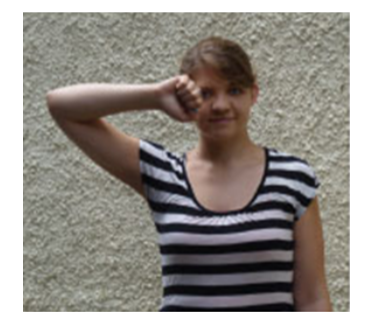
Larson et al. (2006) experiment
Participant is scanned by an fMRI while viewing three displays
perception of motion in both cases is related to the same brain mechanism
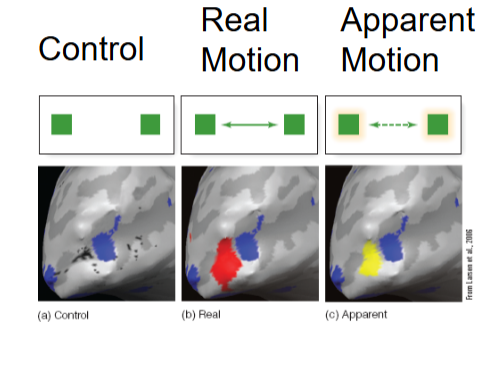
Possible explanation for illusory motion
Believed to involve motion sensitive cells and changes in contrast leading to similar activation as real motion and phi phenomenon (light and dark areas combined)
Induced motion
movement of one object results in the perception of movement in another object
Ex. background moving makes it feel like Mario is moving forward but is actually just running in one place
Implied motion
imagining motions suggested by images
pictures that are stationary depict an action that involves motion Re
Representational Momentum
observers show that the implied motion is carried out in observer’s mind (activity in medial temporal area)
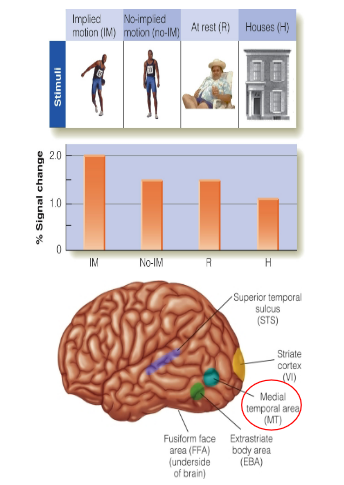
Color
How we experience different wavelengths of color (400-700nm) out of all the electromagnetic spectrum field
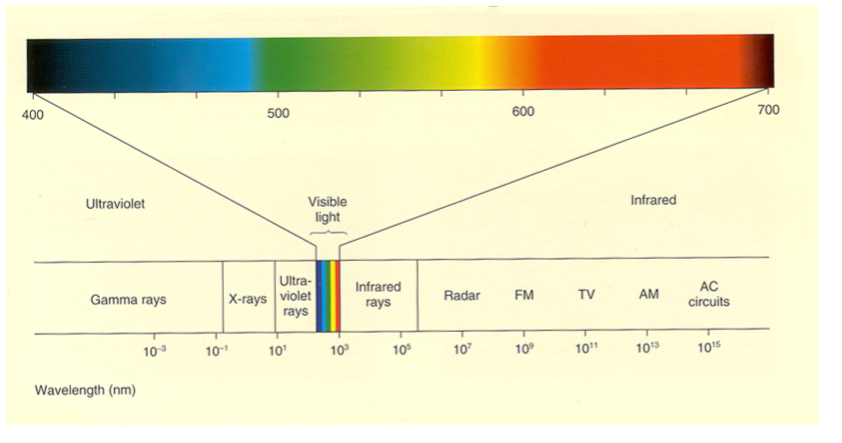
Superimposition
different wavelengths of light at the same location don’t mix into one wavelength of light - they exist separately in the same location like a rainbow
Achromatic colors
contain no hue (white, black and gray tones)
Colors can be changed by:
hue, saturation, and intensity
Hue
changing wavelengths (short, medium, long)

Saturation
adding white (all wavelengths) to a color results in less saturated color; purely one type of wavelength shows one color
Ex. short wavelength = blue color or pink is desaturated long wavelengths

Intensity
energy or amount of light (think of the color experience of black)

Additive Color Experience
mixing lights of different wavelengths
superimposing short and medium with long light waves leads to perception of white
What two wavelengths make what color?
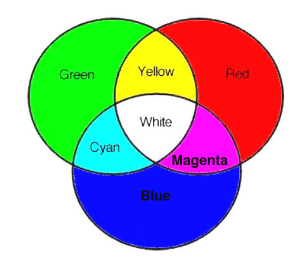
Trichromatic Theory (Young and Helmholtz, 1800s)
three cone types that are sensitive to different ranges of wavelengths
combinations of responses across all 3 cones types lead to perception of all cones (*need to know what all 3 cone’s wavelength is to determine color)
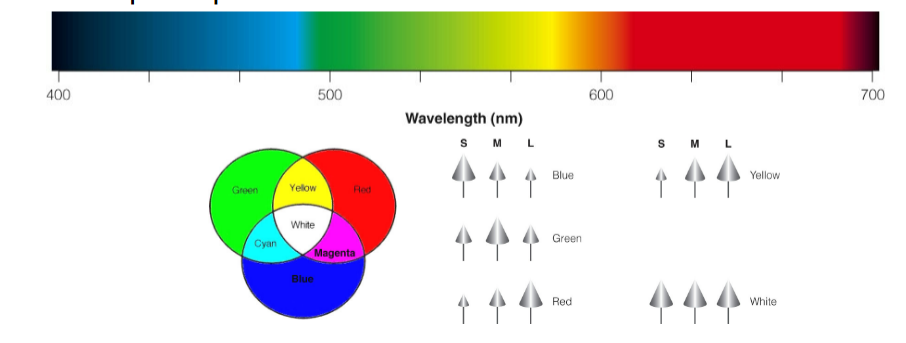
Metamers
colors that are perceptually similar can be caused by different physical wavelengths
Ex. yellow can be seen either be seen in one single long or medium wavelength or long and medium at the same time
Subtractive Color mixing
starting with all wavelengths and then subtracting short, medium, or long
Ex. yellow takes away short wavelength (absorb short, reflect long and medium)
Selective reflectance
colors of objects are determined by the wavelengths that are reflected rather than absorbed
Opponent-Process Theory of Color Vision
colors are discriminated by opposing responses generated by blue and yellow and by green and red
Circuits located in retina and LGN (like a seasaw): tells the difference
Respond in an opposing fashion, such as negatively to red and positively to green (the neuron fires more for green but fire less for red)
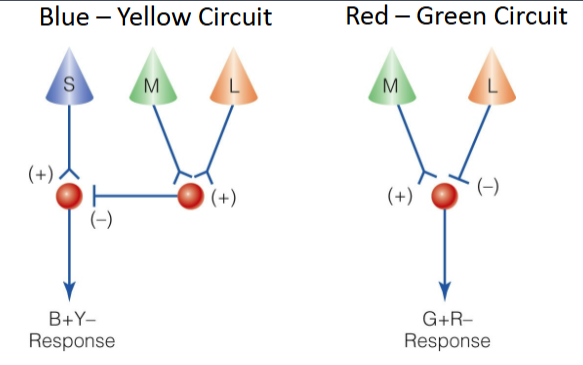
Behavioral evidence of Opponent-Process Theory
color afterimage, simultaneous color, and color blindness
Color Afterimage
Stare at blue for a while, neurons tire out for short wavelength cone and will see yellow instead
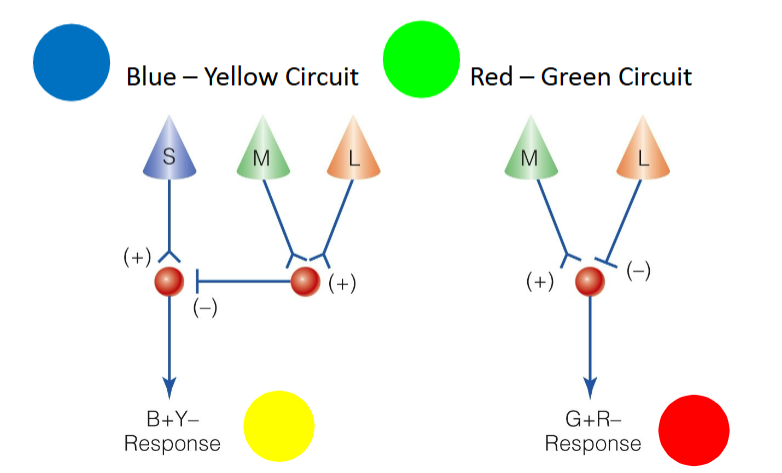
Simultaneous color contrast
you see yellow in gray X from blue box because blue is sending lateral inhibition to X, suppressing the blue and bleu is opposite of yellow
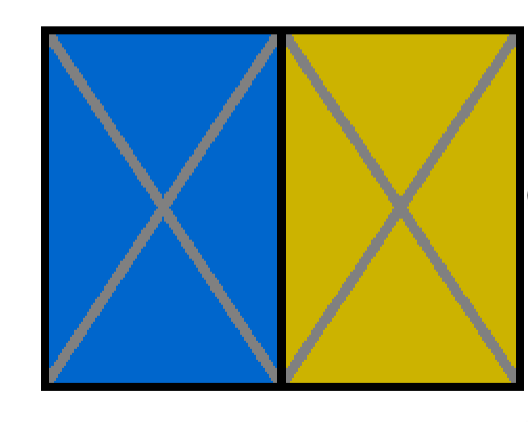
Monochromats
one (or no) types of cones, only rods, ability to perceive only in white, gray, and black tones
True blindness, poor visual acuity, very sensitive eyes to bright light
Dichromat
two cone types (most common blindness)
3 types: protanopes, deuteranopes, and tritanopes
Protanopes
can’t tell the difference between red and green, long wavelength cone circuit cut
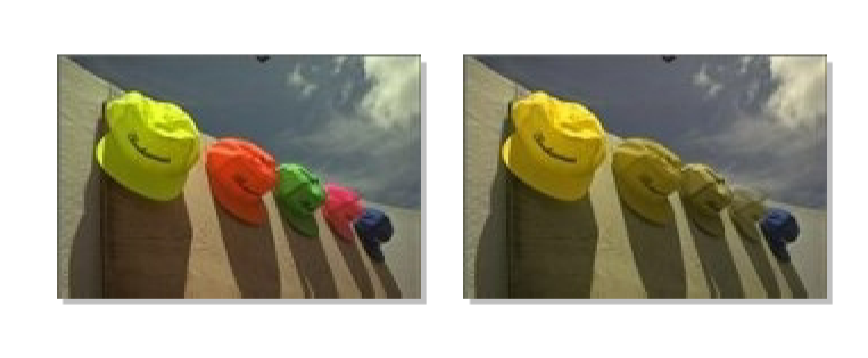
Deuteranope
can’t tell the difference between red and green, medium wavelength cone circuit cut
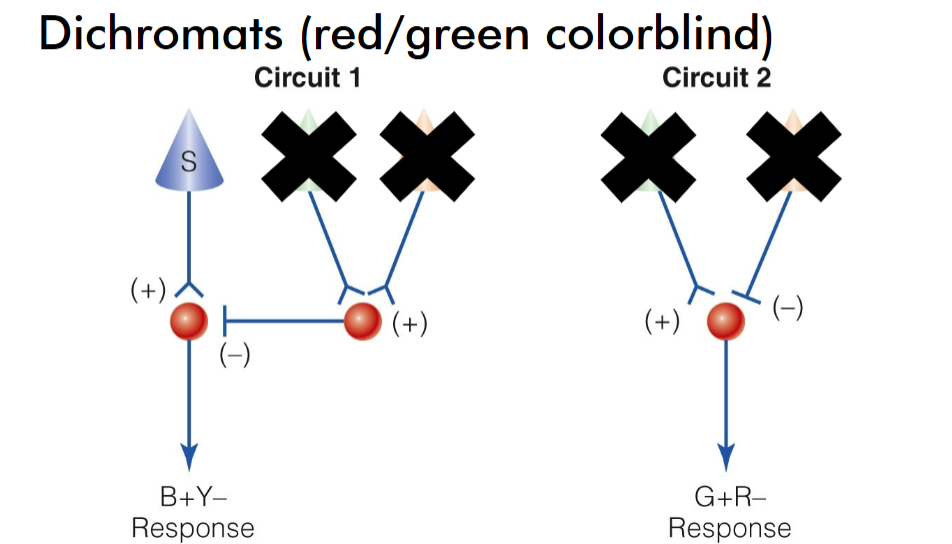
Tritanopes
yellow/blue color blindness
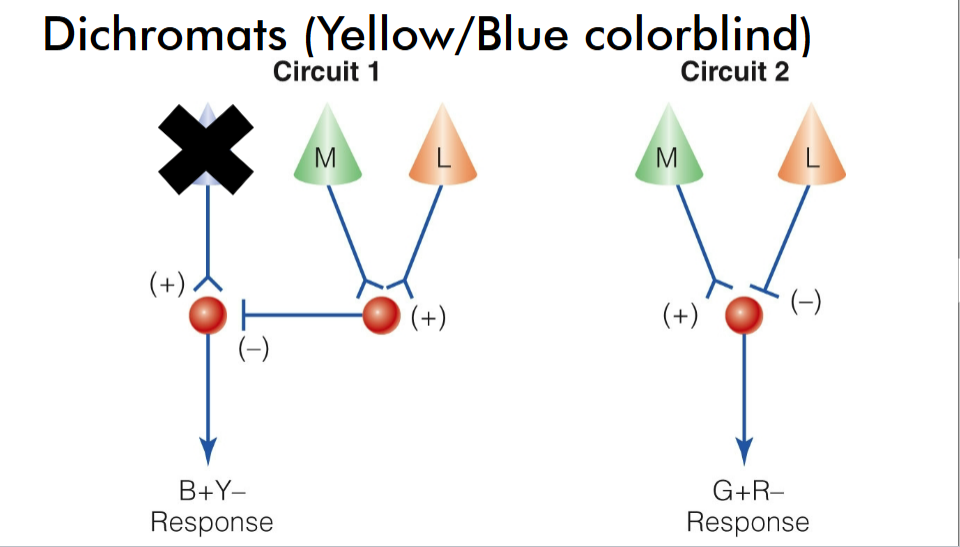
Trichromatic Theory vs. Opponent-Process
explains how you discriminate wavelengths of light vs. explains why colors look distinctive in your mind
Chromatic Adaptation
adapting when the stimulus color selectively bleaches a specific cone pigment
Ex. too much red (long wavelength), you become less sensitive to it
Effect of Surroundings
works best when an object is surrounded by many colors
Ex. Unred gray — cyan (brain does if there’s too much of the same colors, in this case, red and goes to opponent color)
Memory and color
past knowledge impacts color perception
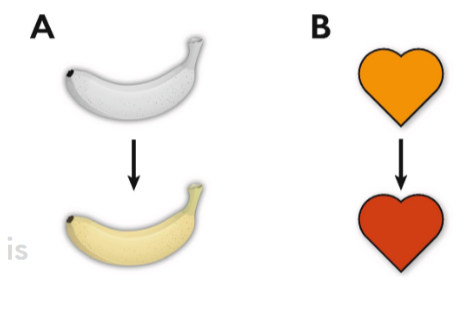
Lightness constancy
lightness perception under uneven illumination
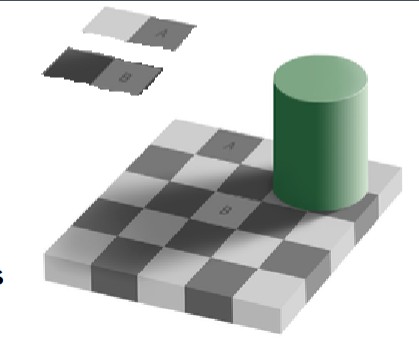
Reflectance edge
edges where the amount of light reflected changes (changes in surface color, material, or texture)
Illumination edges
edges where lighting of two surfaces changes (change in light intensity or direction)
Ex. hand and its shadows
Oculomotor Cues
convergence and accommodation
Convergence
inward movement of eyes when we focus on nearby objects (requires 2 eyes)
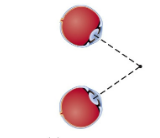
Accommodation
change in the shape of the lens when we focus on objects at different distances (requires 1 eyes only)
Monocular Cues (Pictorial)
occlusion, relative height, relative size, perspective convergence, familiar size, atmospheric perspective, texture gradient
Occlusion
when one object partially covers another (an object is perceived as closer when it is in front)
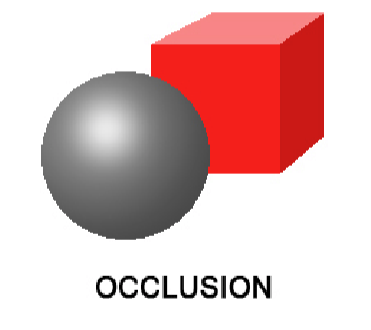
Relative height
objects below the horizon that are higher are more distant (the higher an object is touching the ground, the farther it is away from you)
Ex. point down = closer, point up = further (ground)
Point straight up = closer, point up at an angle = further (sky)
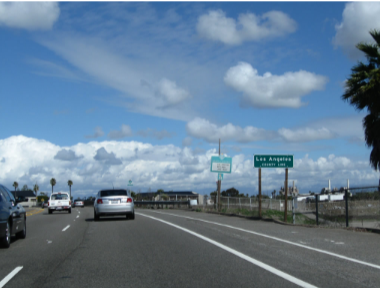
Relative size
when objects are equal size, the closer one will take up more of your visual field (object looks bigger, it is closer to you)
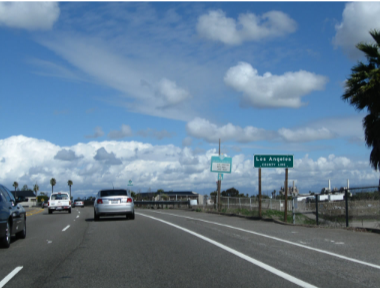
Perspective convergence
parallel lines appears to come together in the distance
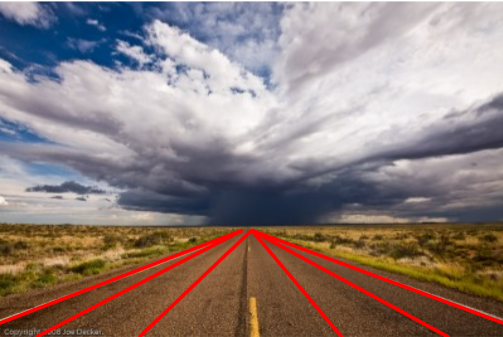
Familiar size
distance information based on our knowledge of object size
Ex. spider is small but it only looks bigger b/c it is closer up on your face)
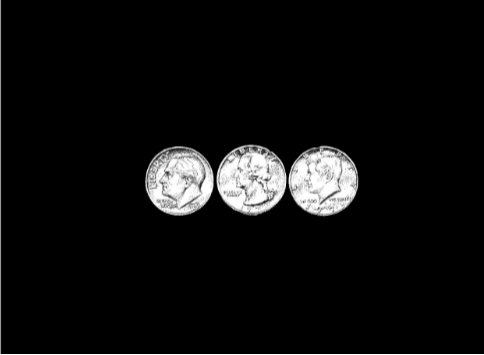
Atmospheric perspective
distance objects are fuzzy and have a blue tint

Texture gradient
equally spaced elements are more closely packed as distant increases
Ex. trees

Shadows
indicate where objects are located (enhance 3-D of objects)
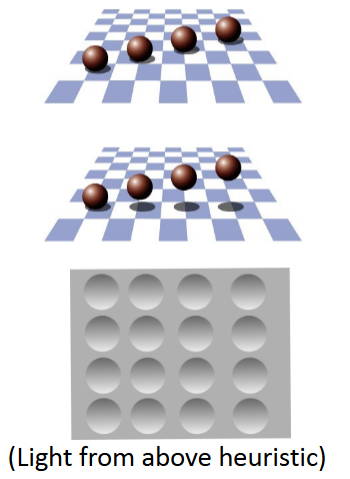
Monocular Cues
Motion parallax and deletion and accretion
Motion parallax
close objects in direction of movement glide rapidly past but objects in the distance appear to move slowly
Ex. when driving, closer objects move fast across your sign (like a sign) but further objects like mountains move slowly across your eye
Deletion and accretion
objects are covered (deletion) or uncovered (accretion) as we move relative to them
the further two objects are apart, the faster an object is covered and uncovered
Binocular Depth Information
horopter, corresponding retinal points, binocular disparity, absolute disparity, relative disparity
Horopter
imaginary line through everything that is the same distance you are looking
Corresponding retinal points
matching points of the two retinas (everything on the horopter makes images with corresponding retinal points)
Binocular disparity
anything a different distance away than where you are looking will have mismatching locations on the left and right away
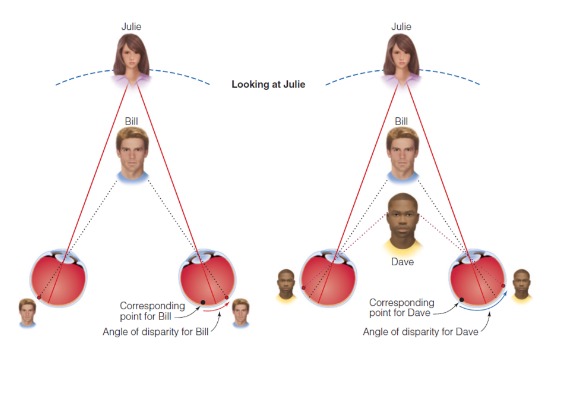
Absolute disparity (different)
difference from corresponding retinal points from an image
Ex. the difference from the location of both eyes (center and matched) looking at an object that is closer or further from the original object
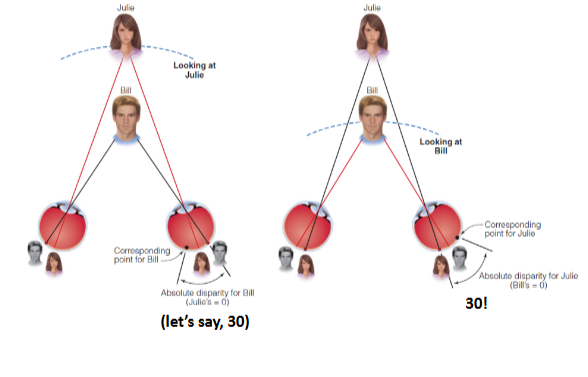
Relative Disparity
the difference in absolute disparities between two image
Binocular Depth Cells
aka disparity selective cells
Responds best to specific degree of absolute disparity between images on the right and left retinas
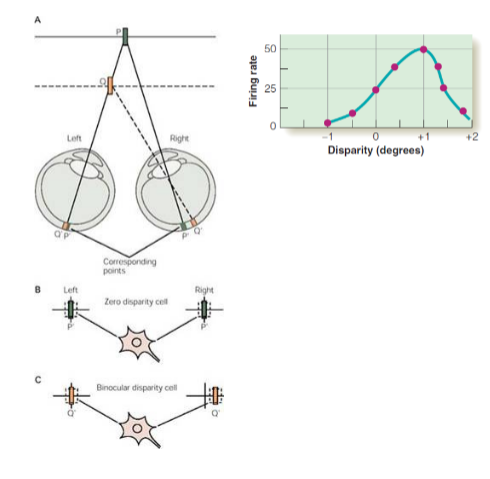
Frontal eyes
result in overlapping fields of view are necessary for binocular disparity